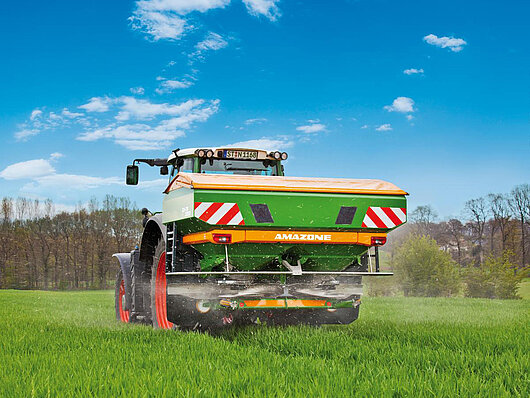
Fertilize to the point where your field needs it
Hardly any field is homogeneous and offers the same yield potential everywhere. Practical data shows that a uniform distribution of fertilizers in accordance with the German) fertilizer ordinance (DüV) leads to an oversupply within your fields in 33% of cases. In 42% of cases, there is even an undersupply and yield losses in the fertilized areas / zones.
What is important?
- No nutrient losses in low-yield zones
- Optimal supply of high-yield zones
- Higher efficiency of late application
- Yield-securing effect in red areas despite deductions
- Reduction of effort and costs
- Long-term assurance of yield and quality
- Efficient use of resources
- Integration of different sensor methods (satellite data, nitrogen sensor, simulation models)
- Site-specific basic fertilization based on soil analysis

Uniform nitrogen application
- Average yield of the entire field is decisive
- Underfertilization in high-yield zones
- Overfertilization of weaker areas
- Yield is wasted
- Waste of precious resources
- Pollution of the environment

Optimally adapted nitrogen application
- Variable nitrogen application in the field
- Nitrogen quantity according to the yield potential of the yield zones
- Saving costs and resources in low-yield zones
- Yield increase in high-yield zones
- Environmentally friendly and sustainable management
- Average + 10 % yield increase with the same amount of N*
* Based on the results of NEXT Farming test plots
